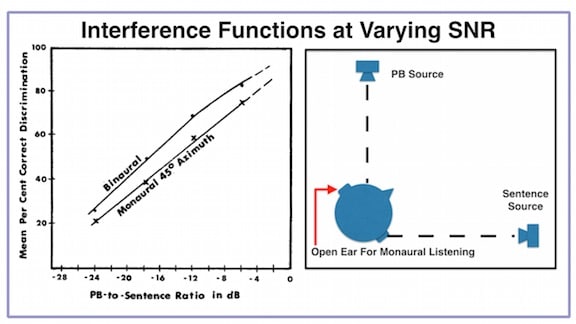Last week I attended a meeting of the American Medical Association (AMA) where we were tasked with redefining and re-valuing the code for Computerized Dynamic Posturography (CPT 92548). The proceedings surrounding the development of values for codes are confidential; so I cannot discuss the results of these deliberations. In the process of researching this code in preparation for these discussions we learned some interesting things.
The following discussion is based on information obtained from public records; therefore, not confidential, but nonetheless disturbing.
The first thing we did was to look at utilization. In other words, who is performing and billing for this test. Computerized Platform Posturography (CDP) involves measuring a patient’s ability to maintain balance under a variety of test conditions. The previous AMA description of this procedure does not offer any details regarding what type of equipment is required to perform and submit bills for this test. Several years ago I made an attempt at guessing what the AMA manual intended by describing the test as “computerized” “dynamic” “posturography.” This is reprinted at the end of this blog.
In reviewing the Medicare database, we learned that approximately 25% of all bills submitted for CDP testing came from internal medicine, family medicine, or general practice. We contacted the two largest manufacturers of CDP equipment, both Bertec and Neurocom, and learned that the vast majority of their platforms are sold to physical therapy, audiology, otolaryngology, or neurology settings, with less than 5% sold to internal medicine, family medicine, or general practice settings.
Next, we checked in with Propublica, where the general public can see who his billing for specific codes, and how many bills they submit in a year.
To our surprise, we learned that only four facilities were responsible for approximately 25% of all codes submitted for CDP. All four of these practices are located in Brooklyn, New York, and three of the four practices have been indicted for insurance fraud. Read that again. It is not a typo.
This got me thinking, “What is it that these practices are doing? Are they performing CDP testing as we picture, using the 6 conditions of the sensory organization test, or are they doing something else?” None of the four practices discussed above have websites or any public information that clearly indicates what type of testing they are doing, but we know that there are equipment distributors selling reconfigured Wii platforms and recommending the use of the CPT code 92548 for a lesser version of balance assessment.
Here are a couple of examples of companies selling balance clinic packages (Balance-Plus and scott pt), offering billing and coding advice, including off site interpretation of VNG tests. Also, note that one company is suggesting their client’s bill 92546 (Sinusoidal Vertical Axis Rotation) when they don’t sell rotational chairs. I wrote about one of these companies a few years ago, but that didn’t seem to slow them down.

Screen shot example of system, sold by Balance Plus
Here is my previous attempt to understand what the AMA intended by describing CPT code 92548 as Computerized Dynamic Posturography:
92548 – Computerized Dynamic Posturography (CDP)
In the AMA code descriptor there is no detailed description of how this procedure is performed, or what equipment is required. All we have to go on is what you see above: Computerized-Dynamic-Posturography. First, let’s get out the dictionary (Merriam-Websters) and see exactly what each of these words means:
Computerized – “to carry out, control, or produce by means of a computer”
Dynamic – It is not clear what is meant by “dynamic” in this usage. Merriam-Websters dictionary has definitions for dynamical (adjective)- “of or relating to physical force or energy” and dynamics (noun)- “a branch of mechanics that deals with forces and their relation primarily to the motion but sometimes also to the equilibrium of bodies . ” There is no definition for dynamic, but it appears that it is used as an adjective in the coding language.
Posturography – There is no entry in Merriam-Websters for posturography, so I will use the entry from Wikipedia (proceed with caution). “Posturography is a general term that covers all the techniques used to quantify postural control in upright stance in either static or dynamic conditions.”
It seems clear that in order to qualify for this code, you must perform some technique to assess postural control (there are many), and it must be assisted by a computer (most commercially available posturography units are computer assisted). The defining term then is the word dynamic, which does not have a clear definition as it applies to posturography.
One of the larger Medicare regional administrators has interpreted CDP as “… consists of a movable platform surrounded by a movable visual screen that is computer controlled. Both can move separately or simultaneously.” This describes the platforms sold by Bertec and Neurocom, but does not describe a reconfigured Wii platform.
As we move towards clearer descriptions of these tests, and abusers face criminal prosecution, maybe we will see some changes in the use and misuse of these codes.








Wow! You investigated and really uncovered a surprise there. Of course, we know that there are companies billing extra codes for tests they did not run, but it must have felt good to find real proof of this situation. Thanks for sharing.
the issue is two fold for abusing The CPT codes. Certain manufacturers supply low grade equipment to clinical customers and show them how to bill for the test with large returns on their investment. Unfortunately this hurts all of us from the manufacturer standpoint and the clinician. The other side of the coin is the professional office not doing due diligence and researching.I have always been told if it is too good to be true than it is.